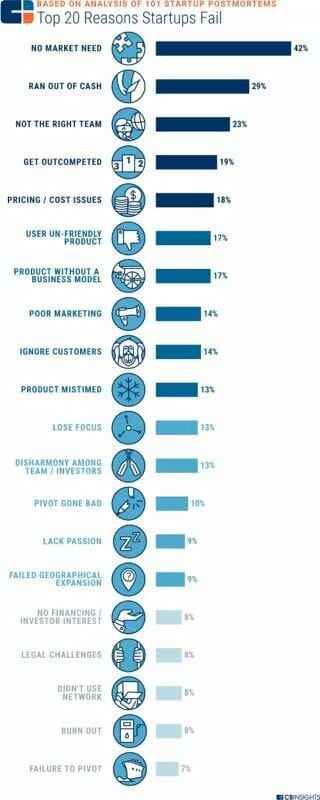Inspiration is the easiest part of starting a business. The hard part? Putting in the hours and preparation for launching a new product or service. Creating a plan and roadmap are essential to staying on task. Here are 6 steps that should not be overlooked.
1. Planning Your Product Strategy
Before you start investing into a product design, you need to have a product strategy in place. How will you market your product? Will it be sold in stores or online? What features are most important? You need to define the goals of your product. You need to have a clear understanding of what your product does for customers, and how it will grow your company.

Start by answering these questions before you think about product features and marketing strategies. Or, better yet, allow your prospects to answer them for you. Survey potential customers to find out which product features and elements of your user experience are most important to them.
2. Develop a Prototype
Turning your inspiration into a working, physical product form is essential to determining its fit and function. Most businesses, in fact, don’t have a physical product ready to test for many months, sometimes even years. It takes time and a team of designers to take the vision in your head and pull it out into a real-world application. That process is prototyping.
Creating your first prototype is the first crucial step to launching a successful business venture. Most businesses that fail do so because they spend too much of their time and resources pursuing a faulty development strategy. Those that reach their first product launch have created and refined a working prototype.
3. Start with Your MVP
Your “MVP,” or minimum viable product, is the bare bones prototype of your product. It only includes the core and functional elements of your product, ignoring all additional features that may be added later. It serves to test your product’s ability to reach certain user experience goals, but may not be market-ready in terms of design or ornamental features.
The MVP will help you test and make changes to your product while saving you time and resources. Test your MVP with focus groups allows you to analyze your product’s core features, and receive feedback on what would make the user experience better. An MVP is also a great asset for developing collateral and marketing material as well as having something to demonstrate on sales calls.
4. Rapid Prototyping vs. Wireframes
One option for creating your MVP is rapid prototyping, where 3D models of the desired product are made to test its basic function and design. Rapid prototyping can be achieved through 3D printing and computer-aided design (CAD) tools. While this version of your MVP won’t be perfect, it will give you the starting point for your design team to test different functions, and for your marketing team to test customer reactions in preliminary focus groups. Rapid prototyping can also be used to create parts for a fully functional, but low-quality product used for testing.
A wireframe is a visual, and sometimes a functional representation of your product. It depicts the basic structure, visual elements and design concepts of the end product you’re trying to create. Unlike a prototype, it does not function as intended for a customer. It may illustrate some features, but the wireframe is not an independent product.
Similar to this is paper prototyping, a process by which sketches and drawings are used before any design work is done. A paper prototype or a wireframe helps solidify ideas and put a basic design together before the actual work begins. You have to start with a wireframe before you move on to prototyping, where the first vision of your product is actualized and can be used for testing.
5. Use First Generation Versions for Market Testing
One of the basic principles of Lean Methodology is that you must constantly test and adjust your product until it is market ready. Part of that testing, however, has to happen in the “live” market setting. As soon as you reach a fully functional MVP, the goal is to start selling and receive feedback from genuine customers, not just focus groups. The sooner you ship, the more information you can gain and less time you’ll spend refining the product.
Introducing your product early will allow you to learn faster and tailor it to what your customers actually want. The longer you wait, the more resources you will use on a product that may not be desirable for your market. Once your first batch hits stores or online retail, analyze sales, buying behavior and feedback from your customers to make additional adjustments. This first phase of market development will serve as a go/no-go for future manufacturing of large quantities for distribution.
6. Outsourced vs. In-House Product Development
Developing a prototype, depending on the available resources in your area, can be a major expense. Even following the Lean Methodology, prototyping is a tremendous risk, with only a small potential for tremendous reward. Every dollar counts when trying to save money while still producing a quality MVP. The amount of time and energy it may take for you to develop in-house could be cut in half if you choose to outsource.
Prototype developers across the world can help you build a product from scratch for the lowest cost possible. You can still expect quality, but save the costs of developing your first products in-house. To learn more about outsource prototyping, click here.

Follow Us